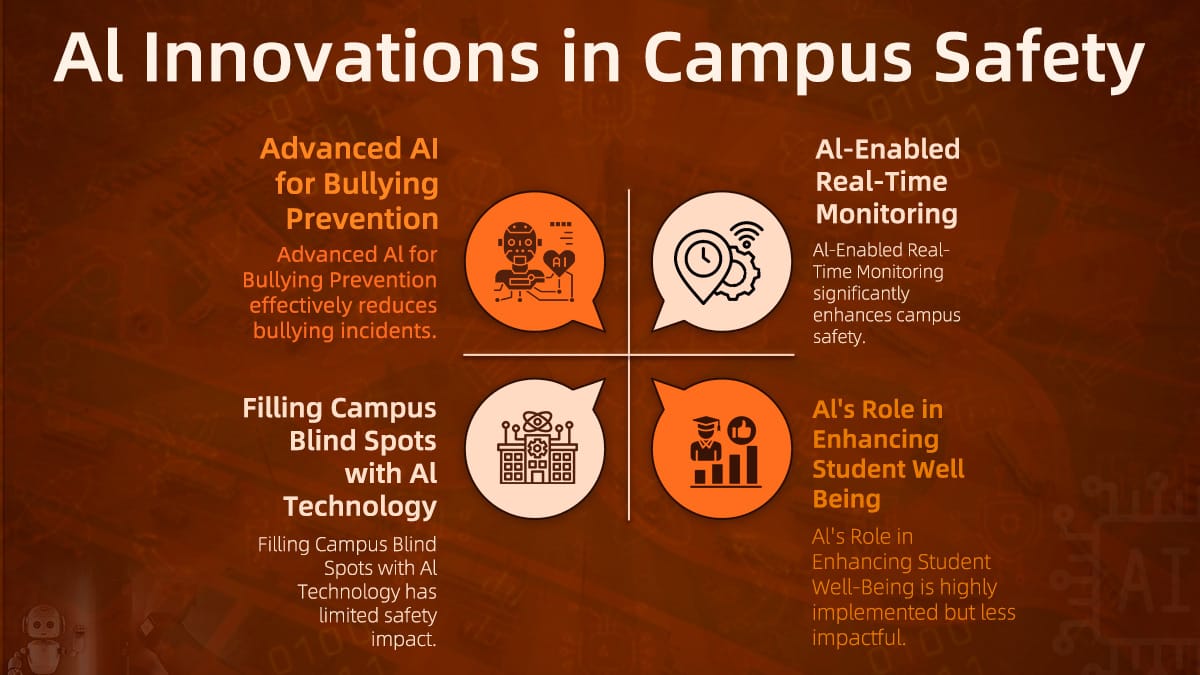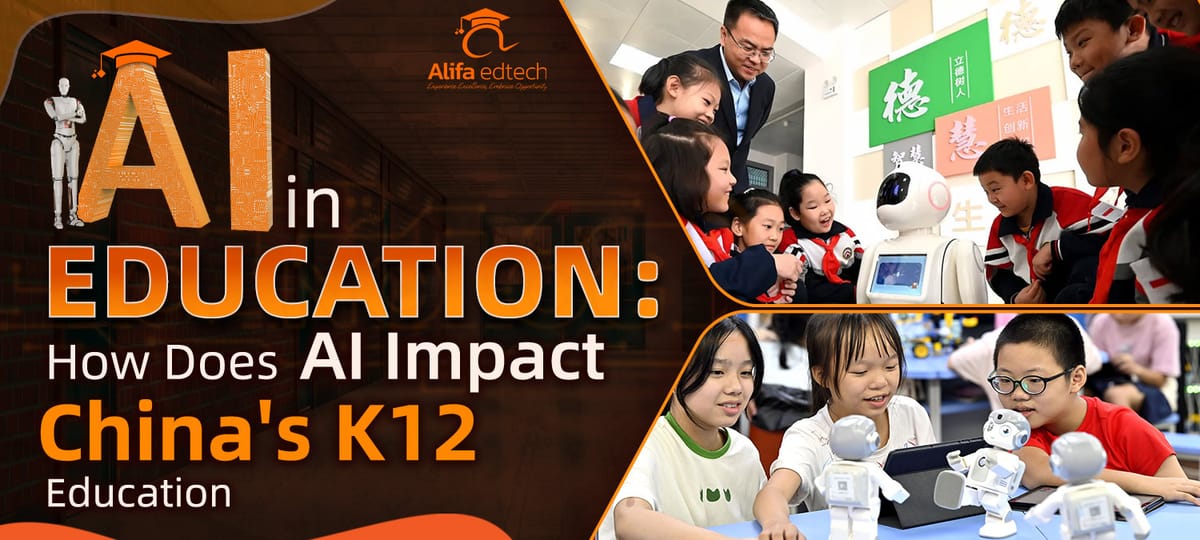Every year, about 246 million kids face school violence worldwide. Chinese students often deal with these risks in their schools. Artificial intelligence is changing that picture.
Educational institutions in China once depended on strict monitoring. It was like wearing "digital shackles" that felt limiting. Advanced technology now creates "growth safeguards." It balances safety and freedom for students.
How can artificial intelligence protect without invading privacy? These tools focus on real threats and respect personal space. They help Chinese students thrive, drawing ideas from Western countries' approaches.
You might wonder, "What does this mean for my child's school?" These systems spot issues early and support well-being.
In this post, you'll explore how artificial intelligence transforms campuses for Chinese students and adapts lessons from Western countries. You'll also learn how Alifa Edtech supports families. If you're in the Philippines or India, Alifa makes school selection straightforward for expatriate parents. Your child can easily find the right fit in international or Chinese schools, with stress-free enrollment options. Let's dive into these solutions together!
Alifa Education Services bridges ed-tech entrepreneurs and policymakers with China's leading AI companies. Get matched with the perfect technology partner for your region.
Book Your Partnership Consultation Today!
Tell us your needs—we'll find your ideal Chinese AI firm match
The Challenges of Traditional Safety Measures

Traditional safety measures in schools often fall short. They create security risks and potential risks that worry parents and students in China. It's time to talk about these issues and why we need a better balance between safety and freedom. Let's look at the key problems.
Privacy Risks in Traditional Monitoring
Constant watching in schools raises big privacy risks. Many feel uneasy with cameras everywhere. A survey showed that 80 percent of respondents agreed these methods invade personal space. Does this sound familiar to you in Hong Kong? Schools in China, like those in the Hainan Safe Campus notes, struggle with this. Sharing data without care grows potential risks. We must find ways to protect freedom while keeping kids safe. What if we could reduce these worries?
Inadequate Coverage of Campus Blind Spots
Some areas in schools stay unwatched, leading to security risks. Hallways or restrooms might miss cameras, leaving gaps. Think about your child's school in Myanmar. These blind spots mean threats can hide, and help arrives late. Traditional setups don't cover everything, so potential risks linger. How do we make sure every spot is secure without making students feel trapped? Balance is key for a safer environment.
Want to put your brand in front of families, students, and education-focused readers? We're inviting select partners to advertise with us on our trusted blog.
Want to get featured? Click 'Learn more' and submit a story for us to include.
Strain on school resources and staff.
Schools often lack enough staff, causing strain on resources. Teachers handle security risks on top of classes, which overwhelms them. In India, you might see similar issues. A report notes that a percentage of respondents agreed this setup is ineffective. Online platforms add more work without extra help. Why should educators carry this burden alone? We need smarter ways to share the load and give them breathing room.
Limitations Affecting Chinese Students' Daily Life
Chinese students face limitations that disrupt their routines. Security risks make learning feel restricted, like constant checks stop free play. In the Philippines, parents share these concerns. Potential risks include stress from over-monitoring, and surveys say a percent of respondents agreed it affects happiness. Does your child feel the weight of this? True freedom helps them grow without these daily hurdles.
Comparisons with Western safety approaches.
Western countries handle security risks differently than in China. Their methods often use less intrusive tools, yet still cover potential risks. For example, some balance monitoring with student input. In your context in Asia, how does this compare? Percent of respondents agreed Western approaches feel fairer. Online platforms focus on education, not just watching. Could we blend these ideas for better outcomes?
Vulnerabilities to online and digital threats
Online platforms bring vulnerabilities that traditional measures can't handle well. Cyber-bullying and security risks spread fast on social media. In places like Myanmar, a percent of respondents agreed these threats are growing. Chinese students deal with this daily, making school less safe. Potential risks like hacking add to the problem. What steps can we take to shield kids while letting them explore online? A balanced approach protects without cutting off the world.
How AI is Transforming Campus Safety
AI is changing campus safety for the better. It brings smart tools to protect students while letting them enjoy freedom. No more heavy monitoring; instead, tech like machine learning offers real help. How will this impact your school in Hong Kong?
AI-Enabled Real-Time Monitoring
Machine learning helps with real-time watches, like in Zhuxi County Smart Campus. It spots issues with speed, causing threats to vanish in an instant. The Chinese government backs this for better alerts. South Korea uses similar tech to keep tabs without fuss. Do you worry about your kids in the Philippines? Frontier AI from Tsinghua University speeds up responses, making daily life smoother.
Advanced AI for Bullying Prevention
Frontier AI stops bullying through quick scans, as seen in the Hainan Initiative's setups. It checks behaviors and voices to act early. Tsinghua University leads in these tools that cut risks. South Korea has programs that work well too. What's your take on Myanmar? Machine learning analyzes patterns, helping create a friendly space where students feel supported.
Filling Campus Blind Spots with AI Technology
AI-like Inspur’s Smart Campus Solution provides comprehensive coverage of hidden spots. The Chinese government funds this to cut dangers. Machine learning detects problems in overlooked areas, drawing from South Korea's models. In India, you might see fewer worries in corners. Tsinghua University tests show that full coverage boosts safety. How does this ease your mind about school zones?
AI's Role in Enhancing Student Well-Being
Frontier AI, including robots from Reference Note 5, boosts well-being by chatting and easing stress. Tsinghua University researches how machine learning spots emotional needs. South Korea integrates this for happier kids. The Chinese government supports such innovations. Will this help your child in Hong Kong thrive? It focuses on growth, not just watches, for a balanced vibe.
Proven AI Innovations in School Safety
Case studies from Hainan show AI works, such as intelligent systems that provide timely alerts. The Chinese government pushes for these changes. South Korea's examples inspire with machine learning tools. Tsinghua University proves effectiveness in real tests. In the Philippines, similar setups reduce incidents. Frontier AI makes safety proactive—do you see the benefits for your family?
Ethical Considerations and Best Practices

AI brings both wonders and worries to school safety. Think about ethical considerations when using tech like machine learning. These issues include privacy risks, cultural values, and big threats like existential risks. How do we handle them in places like the Philippines?
Privacy Concerns in AI Monitoring
Ethical considerations arise with privacy risks in AI tools. Schools in India track students via cameras, but data leaks scare parents. Extreme risks, like misuse of info, could harm kids. Huai Jinpeng warns about this in talks. Do you fret over your child's data in Hong Kong? We must engage in an open discussion to address these gaps in trust.
Ethical AI Deployment Strategies
Ethical concerns guide how we roll out AI, such as in South Korea's programs. They focus on fair use to avoid catastrophic risks from errors. Xi Jinping pushes for careful steps in tech. What's your view in Myanmar? Start with clear rules that protect while helping, so AI serves without causing harm or bias.
Balancing Security and Student Freedoms
Cultural values shape how we balance security and freedom with AI. In China, tools promote safety yet let kids play freely, addressing existential risk through non-invasive checks. Tsinghua University studies show tech can support mental health without overreach. Will this work for your family in the Philippines? Keep fun alive while cutting dangers smartly.
Cultural and Regulatory Compliance Issues
Privacy risks vary by cultural values, as Huai Jinpeng notes in ethical discussions. Chinese government rules, inspired by Xi Jinping, ensure AI fits local norms and dodges extreme risks. South Korea blends tech with traditions smoothly. In India, laws help adapt systems—does this align with your community's ways? Compliance builds a safer, more respectful space.
Best Practices for AI in Education
Catastrophic risks demand best practices, like those from Tsinghua University on ethical concerns. Focus on tools that enhance well-being, such as chatbots for stress relief. Chinese government guidelines stress cultural values in design. You'll find this useful in Hong Kong for balanced learning. How can we apply these to make AI a true ally?
Conclusion
AI's changing school safety in smart ways, right? It spots risks fast and helps kids grow freely, like with machine learning tools we discussed. Yet, ethical considerations matter—think privacy risks and cultural values that vary in places like the Philippines or India. How do we keep things fair?
Big threats like existential risk or catastrophic risks need careful handling, as leaders like Huai Jinpeng, the minister of Education and Xi Jinping, President of the People's Republic of China stress. AI can boost well-being without overstepping, but we must respect local norms. In Hong Kong, for example, tech should fit your family's ways.
Schools in Myanmar might see AI as a friend, not a foe, if we address ethical concerns first. What's your next step? Alifa Edtech guides expat parents through China's schools, making choices simple. Your child gets the perfect spot, whether international or local. Book a free consultation today!
Related Articles














Member comments